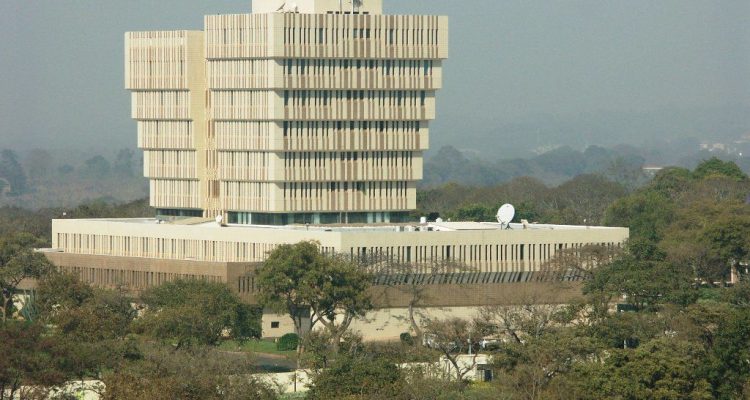
Malawi and Zambia are two neighboring countries in Southern Africa. Both countries have experienced economic challenges in recent years, but their economic growth prospects for 2023 are different. Malawi’s economy is expected to grow by only 0.7%, while Zambia’s economy is expected to grow by 4.7%. This difference in growth rates can be attributed to a number of factors, including the different economic structures of the two countries, the impact of the COVID-19 pandemic, and the war in Ukraine.
In this article, we will compare and contrast the economic growth prospects of Malawi and Zambia in 2023. We will examine the different factors that are driving economic growth in each country, as well as the challenges that they face. We will also conclude with a discussion of the implications of these different economic outlooks for the two countries.
Malawi Economic Growth:
- Food Security:
Statistics from August 2022 indicate a deteriorating food security situation in Malawi. Between October 2022 and March 2023, it is expected that 3.8 million people, constituting 20% of the population, will face high levels of acute food insecurity (IPC Phase 3). This represents an 8% increase compared to the current period.
- Inflation Rate:
In May 2023, the inflation rate in Malawi increased by 29.2% compared to the same month of the previous year. The inflation rate ranged between 6.3% and a maximum level of 37.9%. These figures are reported monthly by the National Statistical Office.
- Inflation Rate in the Reserve Bank of Malawi:
The Reserve Bank of Malawi (RBM) anticipates an average inflation rate of 24.5% for 2023. This projection is 5.8 percentage points higher than the earlier estimate of 18.2%.
- Economic Outlook:
Malawi’s economic outlook for 2023 is poor. The forecast indicates a significant slowdown in real GDP growth, with a projected rate of only 0.7%. This is a decrease from the estimated growth of 1.0% in 2022 and a substantial decline from the pre-Cyclone Freddy projection of 3.7%.
- GDP Growth Rate:
Despite the challenging economic outlook, Malawi’s GDP growth rate is projected to rebound to 2.0% in 2023 and 3.5% in 2024. This recovery is expected to be driven by improvements in agriculture, tourism, exports, and foreign direct investment. However, potential headwinds include weather-related shocks and the ongoing prolongment of Russia’s invasion of Ukraine.
- Economic Overview:
In 2022, Malawi experienced a decline in GDP growth, with a projection of 0.9% compared to 2.8% in 2021. Factors such as lower agricultural output, erratic electricity supply, forex shortages affecting raw material imports, and high global commodity prices contributed to this decline. While economic growth is projected to slightly increase in 2023, it is expected to remain subdued.
- GDP Ranking:
Malawi’s GDP per capita reached USD 635, amounting to a total of USD 12.63 billion for the entire country. This places Malawi among the smaller economies, ranking 139 globally based on the available data for 2021.
Zambia Economic Growth:
- Food Security Status:
Zambia continues to face significant challenges in food security, with malnutrition rates among the highest in the world. Approximately 48% of the population is unable to meet their minimum calorie requirements, and more than one-third of children under five years of age are stunted.
- GDP:
Zambia’s GDP is projected to reach USD 23.04 billion by the end of 2023, according to macroeconomic models and analysts’ expectations. Long-term projections suggest a trend of around USD 24.03 billion in 2024 and USD 25.13 billion in 2025.
- GDP Ranking:
With a GDP per capita of USD 1,137, or a total of USD 22.15 billion for the entire country, Zambia is classified as one of the smaller economies and currently ranks 113 globally.
- Inflation:
Zambia experienced a slight easing of the annual inflation rate to a four-month low of 9.8% in June 2023, down from 9.9% in the previous month. This deceleration was primarily driven by the appreciation of the kwacha. Food prices slowed to 11.2% in June, while non-food price growth increased to 7.8%. On a monthly basis, consumer prices rose by 0.8% in June. These figures are sourced from the Central Statistical Office of Zambia.
Overall, the monthly inflation rate in Zambia stands at 0.9 percent.
- Economy:
Zambia faces challenges such as a persistent fiscal deficit projected to be 8.1% of GDP in 2023 and 7.3% in 2024 due to increased social spending. Other headwinds include perennial drought, fluctuating copper prices, and the impact of Russia’s invasion of Ukraine on fertilizer and fuel prices.
- Economic Growth Rate:
Preliminary data released in May 2023 indicated that Zambia’s economy grew by 4.7% in 2022, showing a slight improvement from the 4.6% expansion in 2021.
- Economic Overview:
Zambia’s main exports include copper and cobalt, while non-traditional exports encompass cotton, coffee, fresh flowers, burley tobacco, gemstones, and maize (corn), among others.
Conclusion:
The comparison of the economic growth prospects of Malawi and Zambia in 2023 reveals a number of interesting insights. First, it is clear that the two countries are on different trajectories. Malawi’s economy is expected to grow more slowly than Zambia’s economy in 2023. Second, the comparison highlights the importance of economic structure and policy in determining economic growth. Malawi’s economy is more heavily reliant on agriculture than Zambia’s economy, and Zambia’s government has implemented a number of policies that are designed to promote economic growth. Third, the comparison shows that external factors can have a significant impact on economic growth. Both Malawi and Zambia are facing a number of external challenges, such as the ongoing COVID-19 pandemic and the war in Ukraine. However, Zambia’s economy is less exposed to these external shocks than Malawi’s economy.














